Molecules into cells: specifying spatial architecture
- PMID: 16339735
- PMCID: PMC1306800
- DOI: 10.1128/MMBR.69.4.544-564.2005
Molecules into cells: specifying spatial architecture
Abstract
A living cell is not an aggregate of molecules but an organized pattern, structured in space and in time. This article addresses some conceptual issues in the genesis of spatial architecture, including how molecules find their proper location in cell space, the origins of supramolecular order, the role of the genes, cell morphology, the continuity of cells, and the inheritance of order. The discussion is framed around a hierarchy of physiological processes that bridge the gap between nanometer-sized molecules and cells three to six orders of magnitude larger. Stepping stones include molecular self-organization, directional physiology, spatial markers, gradients, fields, and physical forces. The knowledge at hand leads to an unconventional interpretation of biological order. I have come to think of cells as self-organized systems composed of genetically specified elements plus heritable structures. The smallest self that can be fairly said to organize itself is the whole cell. If structure, form, and function are ever to be computed from data at a lower level, the starting point will be not the genome, but a spatially organized system of molecules. This conclusion invites us to reconsider our understanding of what genes do, what organisms are, and how living systems could have arisen on the early Earth.
Figures
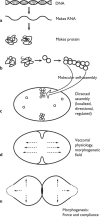
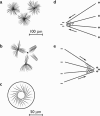

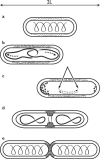


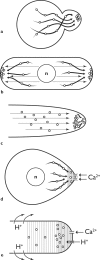
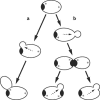
Similar articles
-
To shape a cell: an inquiry into the causes of morphogenesis of microorganisms.Microbiol Rev. 1990 Dec;54(4):381-431. doi: 10.1128/mr.54.4.381-431.1990. Microbiol Rev. 1990. PMID: 2128368 Free PMC article. Review.
-
In pursuit of the whole hypha.Fungal Genet Biol. 1999 Jul-Aug;27(2-3):128-33. doi: 10.1006/fgbi.1999.1124. Fungal Genet Biol. 1999. PMID: 10441438 Review.
-
Polarity and differential inheritance--universal attributes of life?Cell. 2008 Nov 28;135(5):801-12. doi: 10.1016/j.cell.2008.11.006. Cell. 2008. PMID: 19041746 Free PMC article. Review.
-
[A method for assessing the degree of synchronization of microorganism cultures].Mikrobiol Zh (1978). 1985 Mar-Apr;47(2):95-101. Mikrobiol Zh (1978). 1985. PMID: 3917186 Russian. No abstract available.
-
Force and compliance: rethinking morphogenesis in walled cells.Fungal Genet Biol. 2002 Dec;37(3):271-82. doi: 10.1016/s1087-1845(02)00528-5. Fungal Genet Biol. 2002. PMID: 12431461 Review.
Cited by
-
Modular, cascade-like transcriptional program of regeneration in Stentor.Elife. 2022 Aug 4;11:e80778. doi: 10.7554/eLife.80778. Elife. 2022. PMID: 35924891 Free PMC article.
-
Progressive Local Accumulation of Self-Assembled Nanoreactors in a Hydrogel Matrix through Repetitive Injections of ATP.J Am Chem Soc. 2022 Feb 2;144(4):2010-2018. doi: 10.1021/jacs.1c13504. Epub 2022 Jan 21. J Am Chem Soc. 2022. PMID: 35061942 Free PMC article.
-
Systems biology beyond networks: generating order from disorder through self-organization.Semin Cancer Biol. 2011 Jun;21(3):165-74. doi: 10.1016/j.semcancer.2011.04.004. Epub 2011 May 6. Semin Cancer Biol. 2011. PMID: 21569848 Free PMC article. Review.
-
Aqueous phase separation as a possible route to compartmentalization of biological molecules.Acc Chem Res. 2012 Dec 18;45(12):2114-24. doi: 10.1021/ar200294y. Epub 2012 Feb 14. Acc Chem Res. 2012. PMID: 22330132 Free PMC article.
-
Dynamic multiprotein assemblies shape the spatial structure of cell signaling.Prog Biophys Mol Biol. 2014 Nov-Dec;116(2-3):158-64. doi: 10.1016/j.pbiomolbio.2014.07.002. Epub 2014 Jul 18. Prog Biophys Mol Biol. 2014. PMID: 25046855 Free PMC article. Review.
References
-
- Adams, I. R., and J. V. Kilmartin. 2000. Spindle pole body duplication: a model for centrosome duplication? Trends Cell Biol. 10:329-334. - PubMed
-
- Albrecht-Buehler, G. 1990. In defense of “non-molecular” cell biology. Internat. Rev. Cytol. 120:191-241. - PubMed
-
- Arnone, M., and E. H. Davidson. 1997. The hardwiring of development: organization and function of genomic regulatory systems. Development 124:1851-1864. - PubMed
-
- Ausmees, N., and C. Jacobs-Wagner. 2003. Spatial and temporal control of differentiation and cell cycle progression in Caulobacter crescentus. Annu. Rev. Microbiol. 57:225-247. - PubMed
-
- Ausmees, N., J. R. Kuhn, and C. Jacobs-Wagner. 2003. The bacterial cytoskeleton: an intermediate filament-like function in cell shape. Cell 115:705-713. - PubMed
Publication types
MeSH terms
LinkOut - more resources
Full Text Sources
Other Literature Sources
Medical
Miscellaneous

